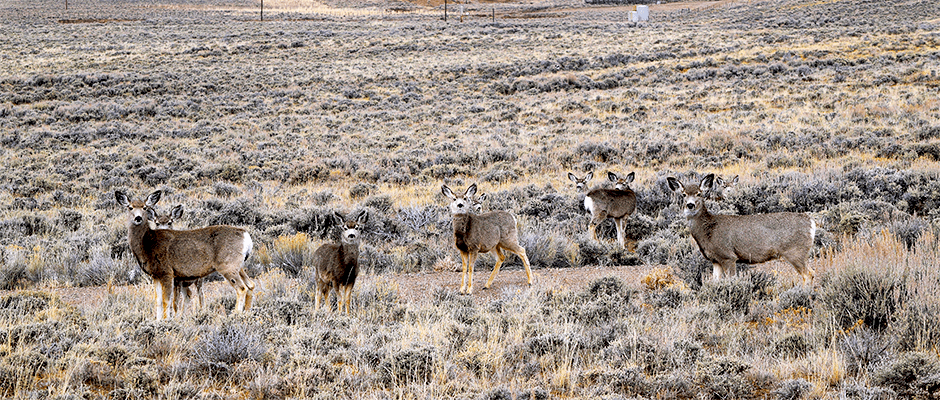Share this article
Student research project: Energy development deters mule deer
An increase in energy development in Wyoming has caused mule deer (Odocoileus hemionus) to avoid areas they once used as habitat, according to a research presentation at the TWS 26th Annual Conference.
As part of her master’s work at the University of Wyoming and with the Wyoming Cooperative Fish and Wildlife Research Unit, Samantha Dwinnell studied the landscape impacts of energy development projects on populations of mule deer in northwestern Wyoming.
“Personally, my motivation for studying mule deer was not for the species specifically, but more so because mule deer is a game species and a managed species. It’s a really good species to study if you’re interested in applied ecology,” Dwinnell said. “I was interested in the impacts of anthropogenic disturbance on wildlife populations.” At The Wildlife Society’s annual conference last October, she presented her findings, earning an honorable mention in the master’s category
In northwestern Wyoming, especially over the 15 years, companies have rapidly exploited energy sources in the area, including natural gas. Past research has shown that mule deer are avoiding these areas, Dwinnell says. Because they are a prized game species in Wyoming, mule deer are important both economically and socially.
As part of her study, Dwinnell tracked deer wearing GPS collars and used remotely sensed data to monitor the species. She also monitored the animals’ body fat by capturing them in their winter range each spring before migration. Dwinnell says mule deer migrate over 100 miles from low sage steppe to high alpine country in Wyoming.
Dwinnell also measured the quality of the sage brush, including its digestibility and availability. “Superficially, people would believe this is all the same habitat, but there’s variation in quality and quantity of sage brush,” she said.
After putting all of these aspects of her research together, Dwinnell discovered a few things about the impact of energy development on mule deer. She determined that the animals were, in fact, avoiding areas with energy development projects, despite the sage brush that was available to them. “There was good forage, but they were not using it as well as they would if the development wasn’t there,” she said.
Finally, Dwinnell found a slight relationship between lower body fat and being close to areas with energy development projects. However, the weak relationship may have had to do with the amount of body fat the mule deer had prior to migration, she says.
Dwinnell says energy development is something that is not going to go away since natural gas and oil is important to the country’s economy. But, “having this information can provide a more accurate estimation of impacts we can expect,” she said. Further, it can help inform decision making regarding where more energy development should occur.
Dwinnell says the Wyoming Cooperative Fish and Wildlife Research Unit have already disseminated this information through their annual reports, and she has also been involved in public meetings regarding the topic.
As for winning an award with TWS for her work, “It felt pretty rewarding,” she said. “A lot of work goes into these things. I know there’s a lot of great research around the country. I felt so honored to be recognized and to have my work out of our lab recognized.”
Header Image: Mule deer stand close to energy development in Wyoming. ©Samantha Dwinnell








